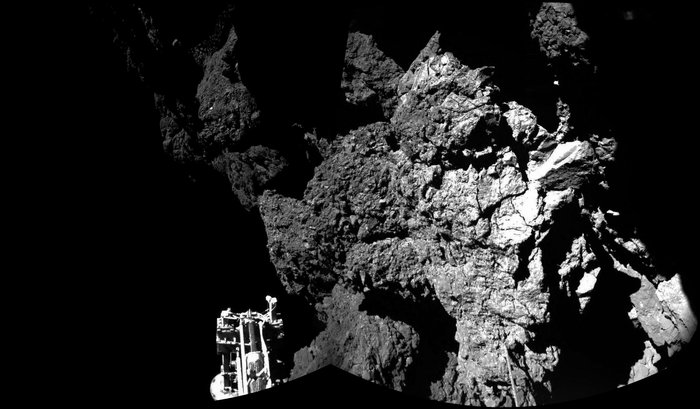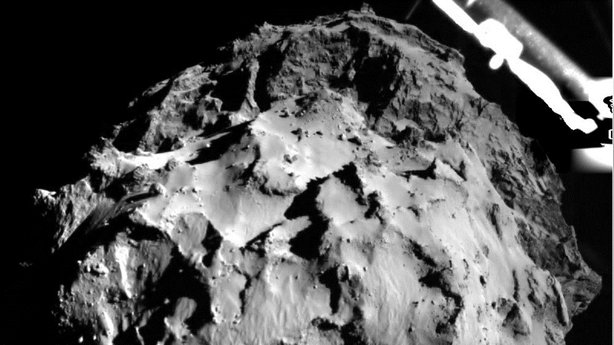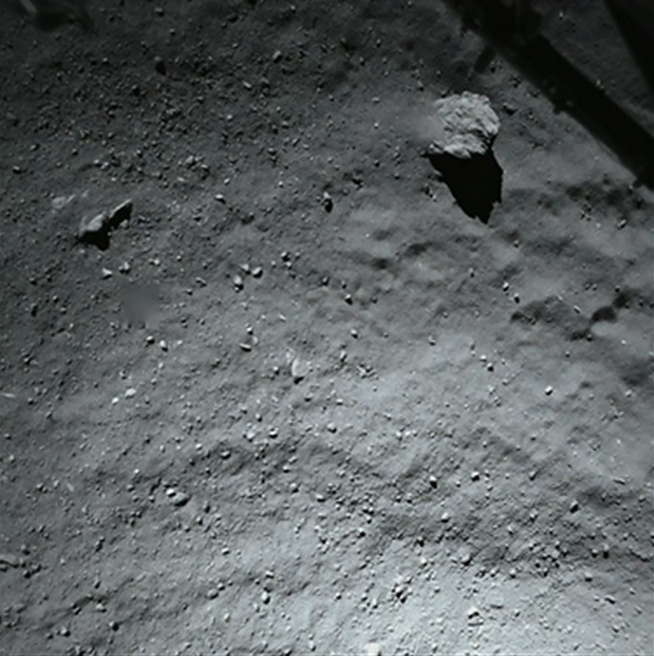
Philae space probe on Comet 67P
The exciting, admirably ambitious European Space Agency (ESA) Philae probe continues to transmit photos of the rubber duck shaped comet 67P, which it landed on two days ago, for an exploratory mission. It took the Rosetta spaceship, carrying the Philae probe, 10-years, traveling 4-billion miles, to arrive at comet 67P, which is hurling through space at 40,000 MPH. When you think about it, it is remarkable the probe even landed on the comet at all, given the logistics and time factor. The project costs an estimated $1.6 billion dollars.
ESA is searching for the exact location of Philae, which is thought to be stuck on its side against a hard surface and running out of solar power, due to being in the shadows. Philae's solar panels are not receiving enough sunlight as the comet rotates to charge the battery. Power is expected to run out in the next 24-hours.

Philae was designed with three legs, possibility to make it more aerodynamic. However, things with three legs, are sometimes less stable (for example, a director's film camera tripod has three legs and if not precisely extended and locked in place on the right angle, the camera will not be stable). Four legs (or more, but in an even number) could have possibly made the probe more stable. The left legs would have to move in unison, as would the right legs, alternating like a human walking or centipede crawling, providing more stability.
Based on specs listed online, the Philae probe has a drill, which is great. The length of the drill would mean unearthing valuable data about the core of the comet that holds significant secrets. As the comet qualifies as extraterrestrial, its core can reveal information about its true origins and what is driving it. And make no mistake, something is driving it.

However, due to Philae's battery issues, activating the drill is problematic and would deplete it's power. The ESA has indicated it wants to drill, but due to power issues, are saving it as a last option. The ESA are contemplating a maneuver to get Philae on its three feet, but time is limited to do so.
One can only imagine what's in the core of the comet and the drill would hit a serious payload if it were able to explore. The core likely contains something rare, as well as noxious gases and possibly a black oil like substance (like drilling for oil on earth). Additionally, if the drill were capable of extracting useable samples, would it be sanitized and safe in the event it were able to reach back to earth, so it would not pose a threat to humanity.